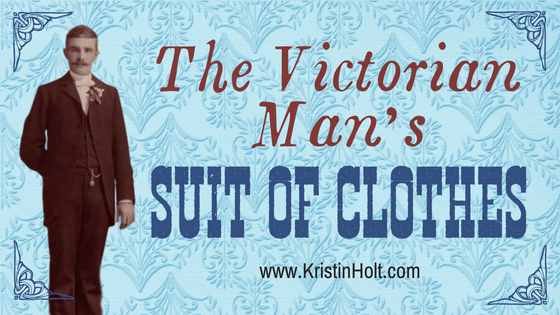
by Kristin Holt | Jul 3, 2018 | Articles
A man’s proper suit of clothes was worn by gentlemen, bankers, clerks, professionals… virtually every man except those who labored manually (such as miners). Given men owned so few items of clothing, they certainly wore what they had, despite the demand. Levi Strauss developed the original “Levi’s 201’s” and “Levi’s 501’s”, built to last in the clothing-destroying mines. Compare and contrast the “suit of clothes” with Levi’s originals.

by Kristin Holt | Feb 3, 2018 | Articles
Examining vintage recipes for any kind of edible… or how to prepare laundry soaps… will often use the term “receipt”. What’s up with that? When wasn’t a recipe, a recipe?

by Kristin Holt | Aug 10, 2017 | Articles
In Part 2 of this blog series, I share 70 newspaper clippings from Victorian America, wherein reports abound that husbands have sold their wives. Prices range from $0.05 (5 cents) to thousands of dollars (US, Victorian). I provided price comparisons, just for impact. Throughout, I provided my opinions regarding TRUTH or JOKE. Ultimately, there had to be some of both. What a bizarre practice!

by Kristin Holt | Jul 11, 2017 | Articles
We know original Coca-Cola (debuted 1886) did have cocaine in it–and not “a trivial amount”. The product began as a replacement for coca wine (just what it sounds like), when temperance laws outlaws alcohol, and Pemberton needed a replacement vector for his coca leaves. Looking back at vintage sources, it’s easy to see when cocaine was removed from Coca-Cola, and how the owners ensured their not-yet-trademarked product remained protected. Numerous credible scientists analyzed the syrup (from various retail locations), swearing to Coca-Cola’s freedom from cocaine, but the attacks didn’t stop overnight. Decades later, Coca-Cola maintained its status as a substance-free “refreshing drink”, a 180° switch from its Patent Medicine beginning.

by Kristin Holt | Jul 8, 2017 | Articles
“[Coca-Cola] has gained an enviable reputation, and has taken position at the very front of the leading and popular soda fountain beverages,” said The Atlanta Constitution of Atlanta, Georgia, on June 21, 1891. People loved the beverage (and its medicinal value), and many wrote testimonials in its favor. So why the complaints? A vintage article titled It Looks Like a Dangerous Drink, originally published in The Abbeville Press And Banner of Abbeville, South Carolina, on July 1, 1891 brings up concerns and presents arguments on both sides, urging consumers to draw their own conclusions. Had YOU been a consumer in 1891, what would you have thought?













